We pick up India’s Digital Journey exactly where we left off from our previous blog. We touched upon the astronomical rise of UPI in India. In this blog, we delve into how it enabled commerce and look into a consumer’s journey in the digital ecosystem.
Fintech
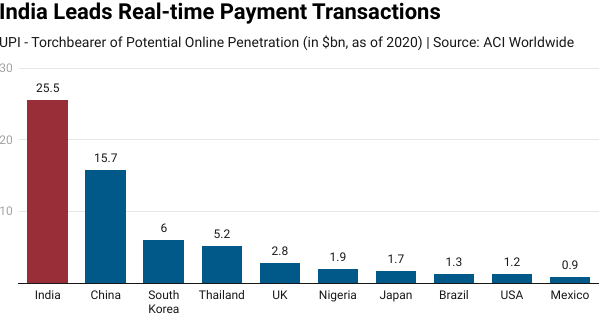
Within no time, India has become a torchbearer of real-time payment transactions in the world. Thanks to UPI. This impressive feat is not just recognised at home but also by nations across the globe. UPI’s global outreach aims to build real-time, lower-cost, and cross-border transactions based on India’s digital finance architecture.
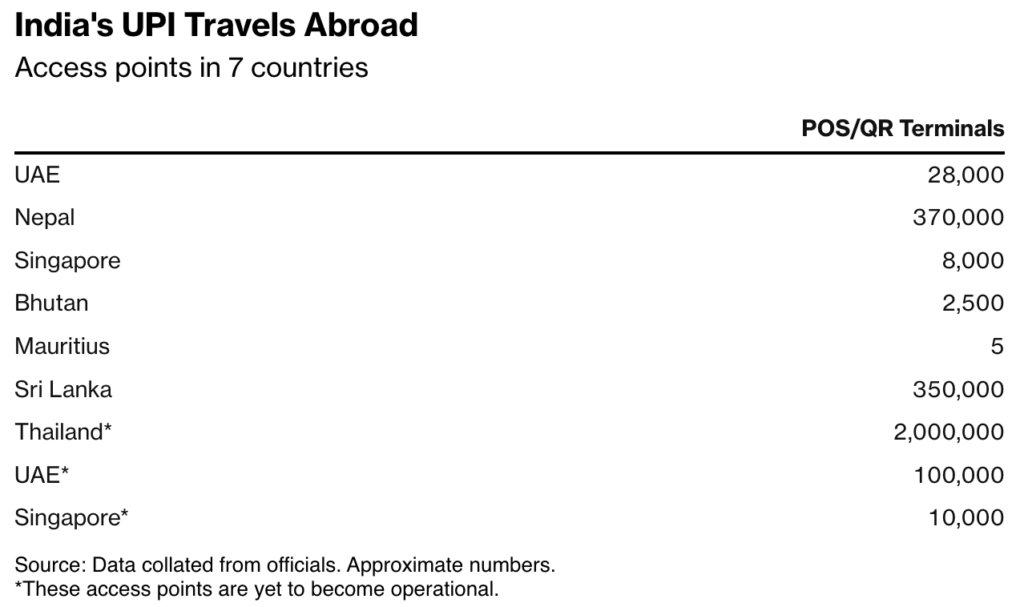
Source: Bloomberg
Such a technological feat comes with ripple effects on the economy. The velocity of money improves, which leads to faster spending/economic activity in the economy, and digital records allow lenders to underwrite loans based on cash flows. Just for context, earlier, the clearing of cheques (which was the preferred way of non-cash transfers then) took approximately two days.
With such ease of payments, digital services too have benefitted tremendously. E-commerce, quick commerce, and hyperlocal commerce are the poster children of UPI’s benefits.
E-Commerce
The surge in connectivity and frictionless payments has fueled the growth of e-commerce. For instance, cash-on-delivery (COD) earlier accounted for more than half of the transactions, now it’s come down to a third of all commerce. COD encompass higher operational costs, cash handling vulnerabilities, increased potential for returns and cancellations, and delayed payments impacting cash flow. Companies no longer have to deal with the same with an increasing number of customers thereby focussing solely on delivery logistics. Online marketplaces have become widely available transforming the way people shop and conduct business, creating a thriving digital commerce ecosystem.
E-commerce has become a driving force in India’s digital transformation. From urban hubs to rural landscapes, online marketplaces are connecting buyers and sellers, offering a diverse array of products and services. This not only fuels economic growth but also provides entrepreneurs and small businesses with a platform to thrive in the digital economy.
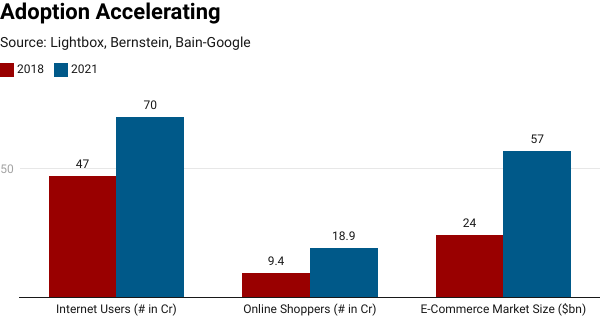
Role of Covid-19
The global health crisis, marked by lockdowns, social distancing measures, and an increased reliance on remote work, compelled individuals and businesses to rapidly embrace digital technologies.
Work-from-Home (WFH) and Digital Communication: With lockdowns and social distancing measures in place, businesses in India swiftly adopted remote work practices. Video conferencing tools, project management platforms, and collaboration software became essential for maintaining work continuity.
Surge in Online Shopping: The restrictions on physical stores led to a surge in e-commerce activities. Consumers increasingly turned to online platforms for essential goods, groceries, and non-essential items.
Contactless Payments: The fear of virus transmission through physical currency accelerated the adoption of digital payment methods. Mobile wallets, UPI (Unified Payments Interface), and contactless card payments gained prominence.
Online Learning Platforms: Educational institutions in India adopted online learning models to ensure continuity in education. E-learning platforms and video conferencing tools played a crucial role in delivering lessons and facilitating student engagement.
COVID-19 Tracking and Vaccination: Digital platforms were leveraged for COVID-19 tracking, contact tracing, and vaccination drives. Cowin, the digital vaccination platform, played a crucial role in managing vaccination registrations and appointments.
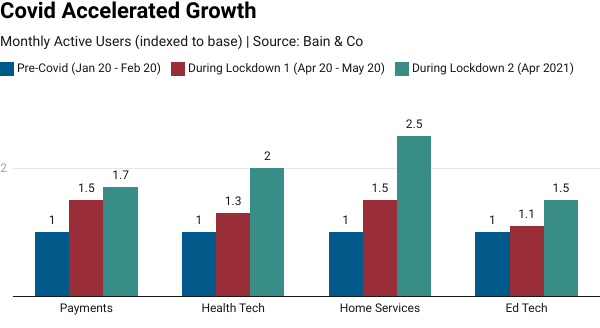
Digital Ecosystem
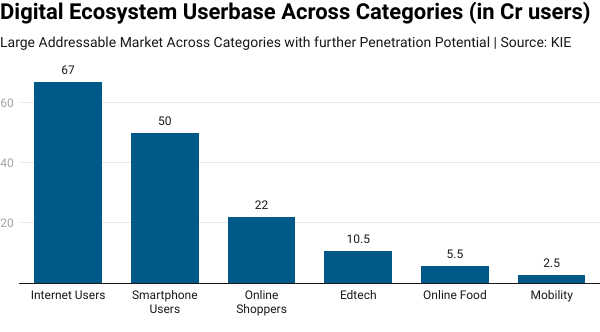
With rapid penetration, India’s internet sector has seen a multifold increase in its total addressable market. Across the board, user numbers are comparable to any large internet market in the world. However, penetration remains low. This is not surprising given the consumer’s journey with digital services evolves over time.
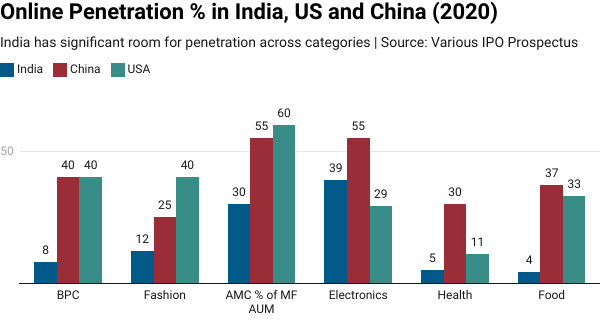
A typical digital consumer journey starts with connectivity through messengers and social media and entertainment through streaming and gaming. Over time, consumer matures and spend increasingly more of their wallet share on other paid services and high ticket consumption. Therefore, we see significant room for growth even from an existing large base for internet companies to cater to.
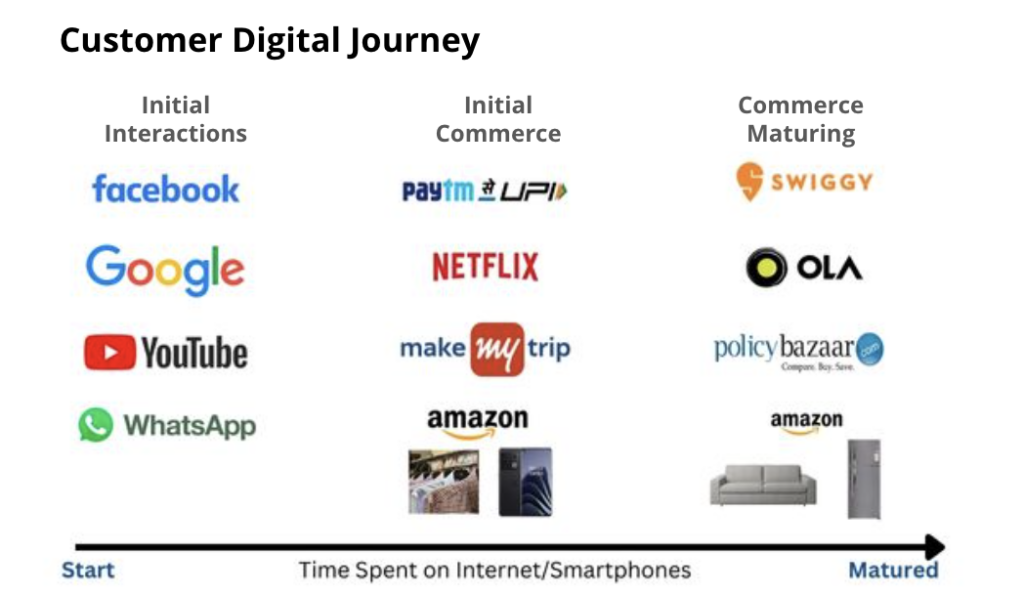
The ongoing digital revolution is not just a technological evolution; it’s a societal transformation that has the potential to uplift millions, foster innovation, and position India as a digital powerhouse on the global stage.
